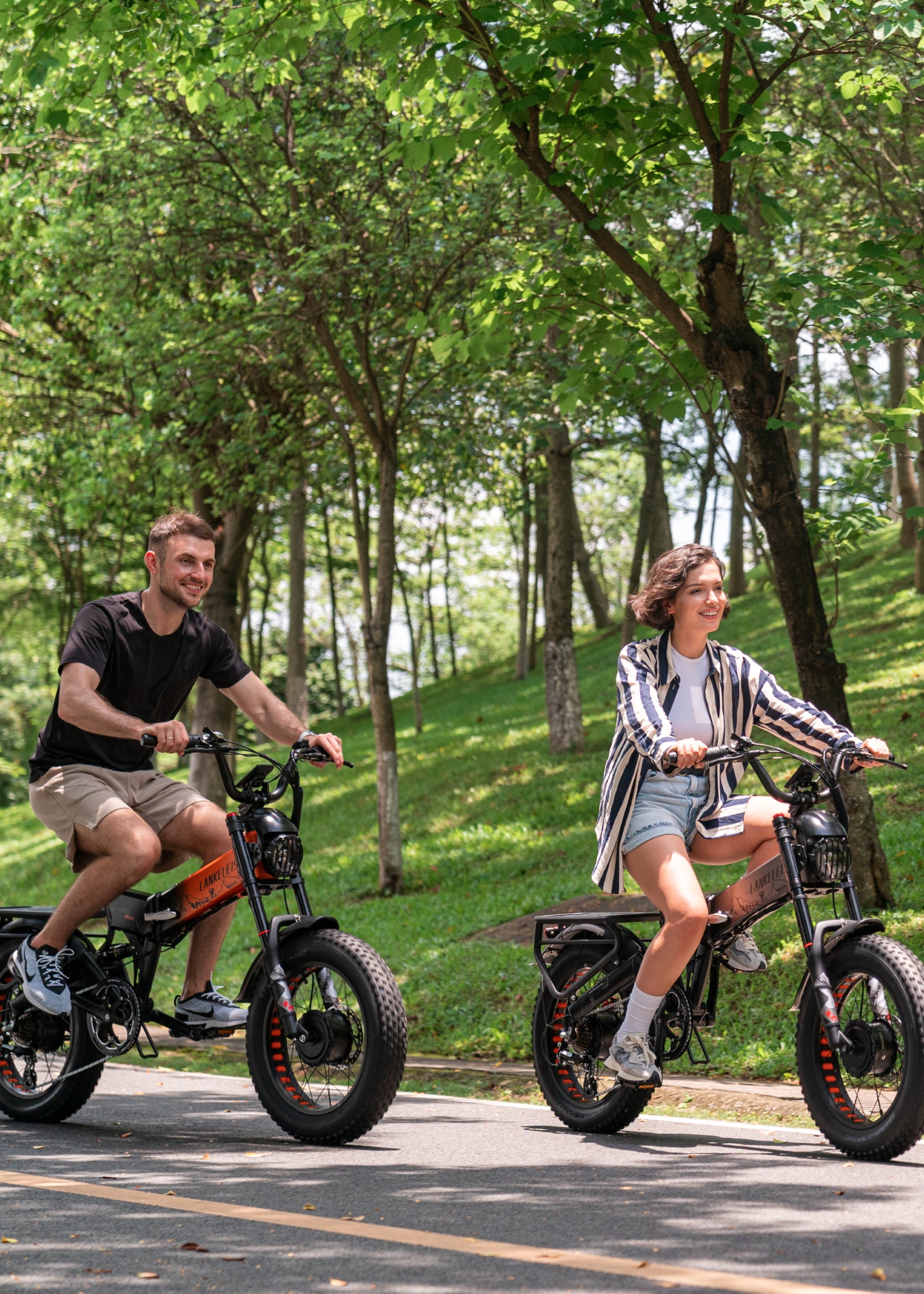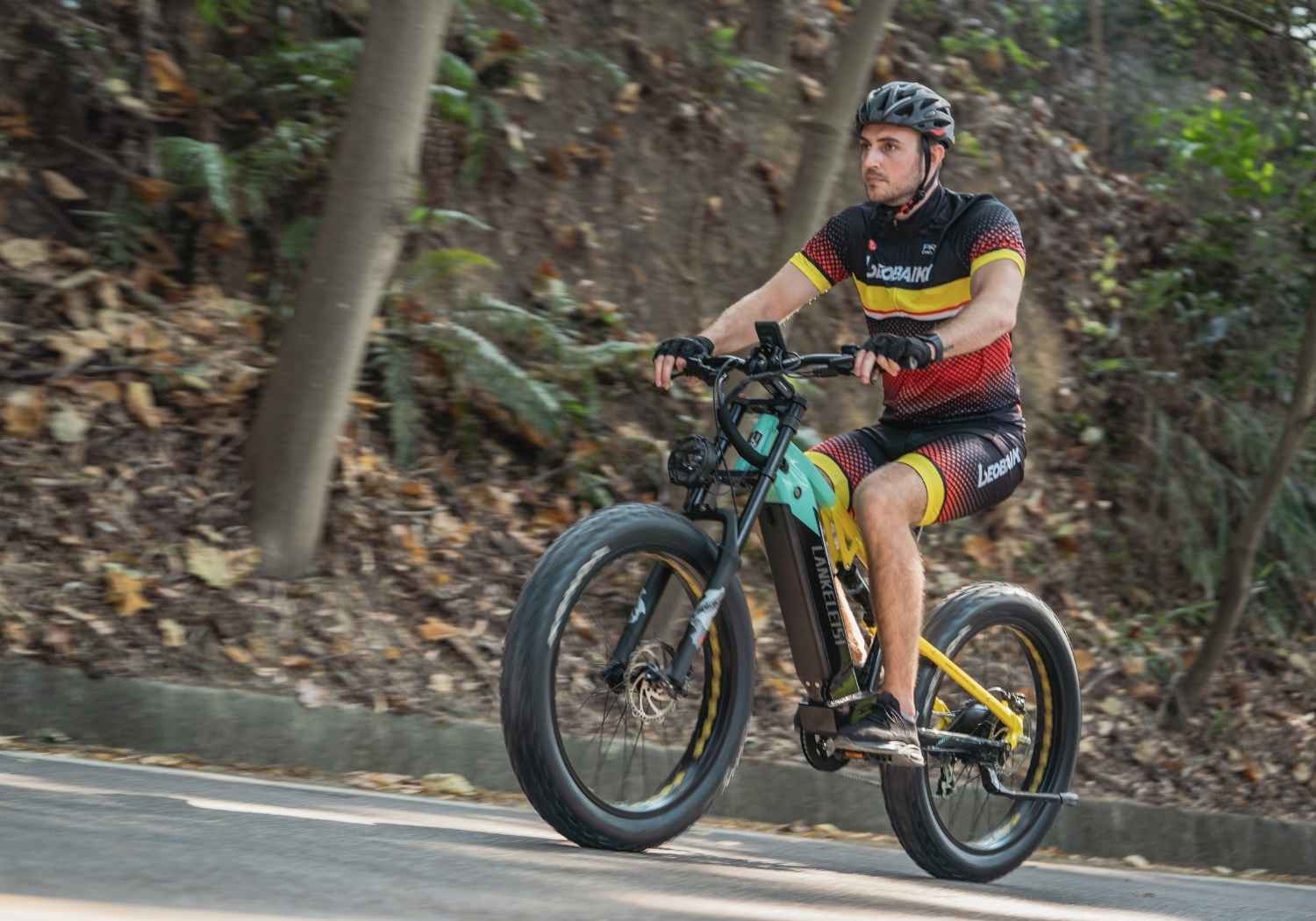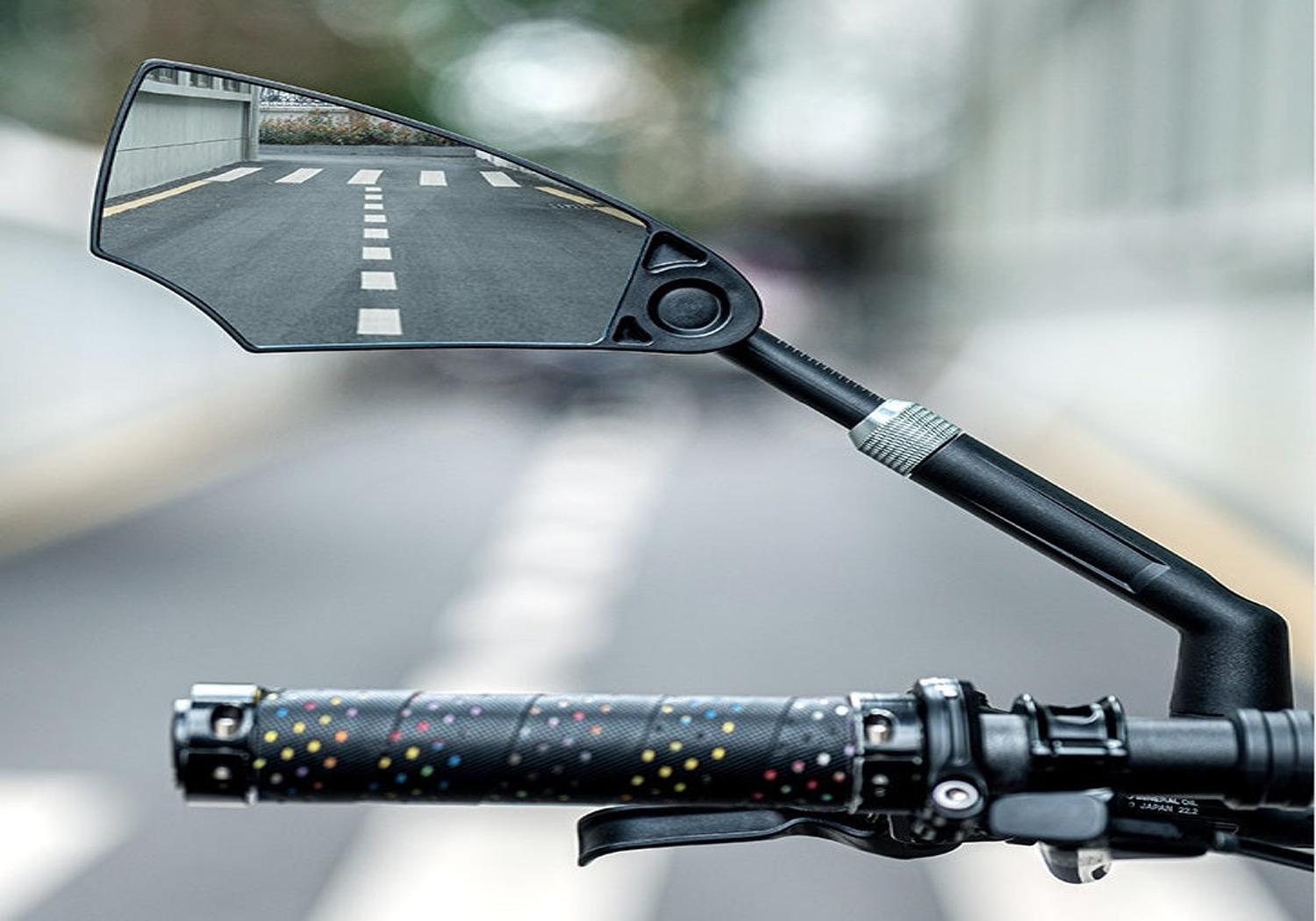Are you planning a family bike ride or preparing for your next urban adventure with your e-bike ? The question quickly arises: is it mandatory to wear a helmet when cycling, and in what situations does the law actually require it?
This question applies to both urban cyclists and e-MTB enthusiasts. In France, regulations are not the same for everyone. They vary depending on age, the type of bike used, and the speed it can reach. Understanding these rules is essential for riding safely and avoiding penalties.
Should children wear helmets when riding a bike?
Since March 2017, French law has required children under 12 years of age to wear helmets, whether they are drivers or passengers on bicycles. The goal is clear: to reduce the risk of head injuries, which are particularly common and serious among young children.
A child riding a bike, even at low speeds, remains vulnerable. Their head is the most exposed part of the body in the event of a fall. Doctors point out that a child's skull has not yet reached its final strength, which increases the severity of impacts. A simple loss of balance can therefore have serious consequences.
If this rule is not respected, the accompanying adult is held responsible. The fixed fine is €135 , a financial reminder that underlines the need for increased vigilance.
Are bicycle helmets mandatory for adults?
For cyclists over the age of 12, the law does not require them to wear a helmet on a conventional bicycle. However, it is strongly recommended by road safety authorities.
Helmets significantly reduce the risk of serious head injuries. According to several studies, they can reduce the severity of head injuries by up to 70%. It's not just a matter of equipment, but a true preventative choice.
In the city, where traffic is dense, a helmet provides additional protection from cars and scooters. When out and about, it becomes an essential ally for enjoying cycling with complete peace of mind. Modern, lightweight, and ventilated models offer such comfort that you'll quickly forget you're wearing them.

Is it illegal to ride a bike without a helmet?
Electric bicycle (EAB ≤ 25 km/h)
Electric bikes limited to 25 km/h, like the majority of LANKELEISI models, are subject to the same rules as traditional bikes. For adults, helmets are still recommended but not mandatory.
However, the higher average speed of e-bikes increases the force of impact in the event of a fall. E-bike riders are also more exposed to long distances and varied environments: cycle paths, county roads, steep paths. In all these cases, wearing a helmet becomes an essential precaution, even if it is not yet required by law.
Speed bikes (> 45 km/h): helmet required
Fast electric bikes, called speed bikes, reach speeds above 45 km/h. Regulations consider them mopeds .
Wearing an approved helmet is therefore mandatory, just like for a scooter. In addition, these bikes must be registered and insured. Riding a speed bike without a helmet exposes you to fines identical to those for motorized two-wheelers.
This requirement is explained by the speed and kinetic energy, which are much higher than those of a conventional bicycle or a limited e-bike.
Why does the law primarily target children?
The decision to require children to wear helmets is based on prevention. Younger children are less experienced, often have limited reflexes, and their heads are more fragile.
Authorities also want to instill a safety reflex from childhood. Wearing a helmet from the earliest years of riding helps establish a lasting habit. Thus, even as adults, these young cyclists will tend to maintain this protective reflex.
The consequences of an accident without a helmet
A cycling accident can have multiple consequences when you don't wear a helmet. Head injuries remain the most serious and can lead to irreversible after-effects, ranging from simple concussions to disabling trauma.
Financially, medical expenses and loss of income in the event of work stoppage are often significant. Finally, there is the legal aspect: when it comes to a child, the responsibility falls directly on the accompanying adult.
Wearing a helmet therefore means protecting your health, your future and, in some cases, avoiding costly penalties.
Modern Helmets: Comfort and Safety
Today's helmets are a far cry from the bulky and unsightly designs of the past. LANKELEISI, for example, offers lightweight and highly breathable bicycle helmets suitable for different riding styles.
They also incorporate advanced technologies like the MIPS system, designed to better protect the head in the event of an angled impact. Other helmets feature practical accessories like removable visors, reflective strips, or integrated LED lighting, perfect for nighttime city trips.
These innovative designs ensure cycling safety without sacrificing comfort and aesthetics.
How to choose the right bicycle helmet?
Safety standards to check
A helmet only offers effective protection if it is certified. We recommend choosing a LANKELEISI bicycle helmet.
For a traditional bike or an electric bike limited to 25 km/h, make sure the helmet bears the CE marking and complies with the NF EN 1078 standard. This standard guarantees that the helmet has passed a series of resistance and shock absorption tests.
For fast bikes, the standard to check is ECE 22.05.
Finding the right size and ensuring a comfortable fit
A helmet that is too big or too small is ineffective. To determine the correct size, measure your head circumference using a tape measure, passing it across the middle of your forehead and above your ears.
Once the helmet is on, it should not compress or move on your head. Tighten the adjustment dial until the helmet is secure but comfortable.
The straps should form a "Y" shape under the ears, and the space between the strap under the chin and the chin should not exceed the width of two fingers.
When should you replace your helmet?
A helmet should be replaced as soon as it suffers an impact, even a minor one. Even if there is no visible damage, its internal structure may be compromised, reducing its protective capacity.
Without shock, it is recommended to replace your helmet every 3 to 5 years. Over time, helmet materials degrade due to UV rays, perspiration, and temperature fluctuations, which reduces its absorption efficiency.
What are the four pieces of equipment required for cycling?
The helmet isn't the only regulated safety device. To ride legally, your bike must be equipped with:
- Two effective brakes , one at the front and one at the rear.
- An audible warning device whose signal must be audible at least 50 meters away.
- Lighting and reflective devices: a yellow or white front light and a red rear light (mandatory at night), orange reflectors on the wheels and pedals, a white reflector at the front and a red one at the rear.
- An approved high-visibility vest, which the cyclist and their passengers must wear when riding outside built-up areas, at night or in reduced visibility.
Conclusion
Wearing a helmet when cycling is not systematically compulsory in France, but it remains an essential element of safety.
- For children under 12 , the law strictly requires it.
- For adults , this is a strong recommendation.
- For speed bikes , it is mandatory in the same way as for a moped.
If you use a LANKELEISI electric mountain bike , investing in a quality helmet remains the best way to combine pleasure and safety during your daily commute or sports outings.
FAQ
What is the date of the law that made helmets mandatory for children?
The measure was incorporated into the Highway Code and became effective on March 22, 2017. Following a decision by the Interministerial Committee for Road Safety.
Can I wear a ski helmet while cycling?
This is not recommended. Each sport exposes you to different types of falls and impacts. A ski helmet (EN 1077 standard) is designed to withstand multiple impacts and resist cold, while a bicycle helmet (EN 1078 standard) is optimized for a single impact and maximum ventilation. These two helmets are not interchangeable due to their specific designs.
Is wearing a helmet mandatory for electric scooters?
It is recommended that you wear a helmet when using an electric scooter outside of dense urban areas. In urban areas, wearing a helmet is strongly recommended, but not mandatory.
Is it safe to buy a used bicycle helmet?
Absolutely not. This is a major risk that should never be taken. You cannot know the helmet's history. It may have suffered invisible impacts that damaged its internal structure, ultimately rendering it ineffective. A helmet is a piece of personal protective equipment that should always be purchased new.







